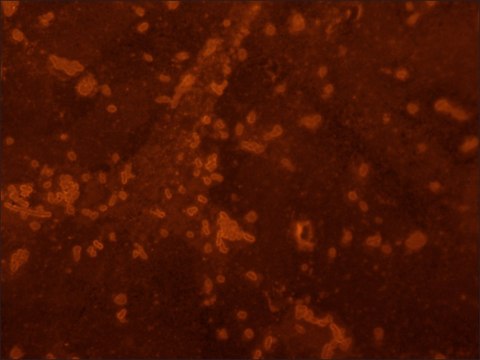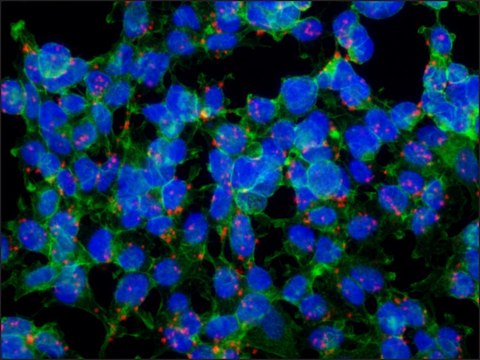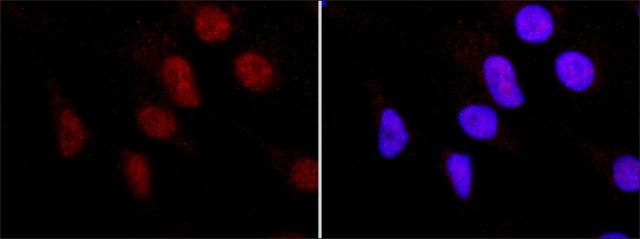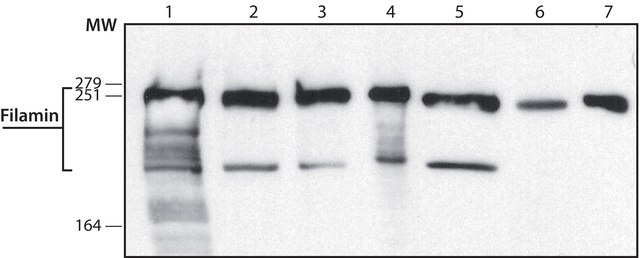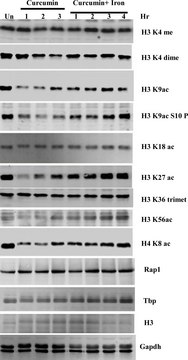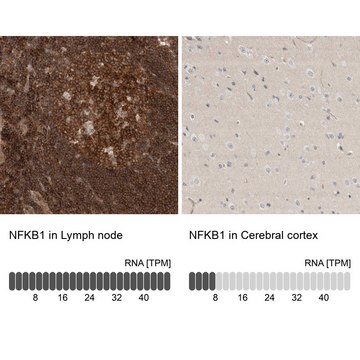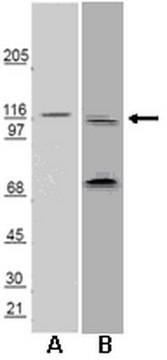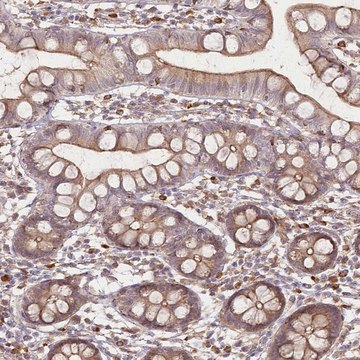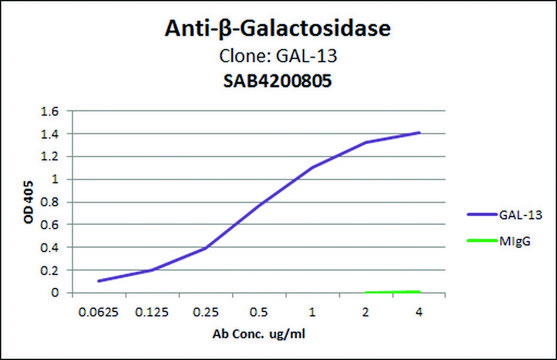General description
Proteus mirabilis is a Gram negative rod-shaped bacteria, belongs to the Enterobacteriaceae family. Member of the Proteus genus (Proteus spp.) which also includes Proteus mirabilis, Proteus penneri and Proteus hauseri, originally characterize by their ability to swarm on solid surfaces, are widespread in the environment and the gastrointestinal tract of human and animals and known to be an opportunistic pathogens isolated from urine, wounds and other clinical sources. The Proteus spp. bacteria, are distinguished by their reactions for indole production, salicin fermentation and aesculin hydrolysis.1-3 P. vulgaris produces indole which differentiates it from the indole-negative P. mirabilis and P. penneri.1-3 Proteus spp. bacteria may also be found in soil or water habitats where they often regarded as indicators of fecal pollution and a contamination threat for potential water or seafood poisoning.1
Specificity
Monoclonal Anti-Proteus mirabilis LPS specifically recognizes P. mirabilis whole extract and P. mirabilis LPS, the antibody has no cross reactivity with P. vulgaris LPS nor with whole bacterial extracts of P. vulgaris, P. gingivalis, E. coli K-12, P. aeruginosa, S. flexneri, S. enterica, E. faecalis and B. subtilis.
Immunogen
Proteus Mirabilis LPS
Application
The antibody may be used in various immunochemical techniques including Immunoblotting and ELISA. Detection of the P. mirabilis LPS bands by Immunoblotting is specifically inhibited by the immunogen.
Biochem/physiol Actions
In the Proteus spp. group, P. mirabilis is encountered in the community and causes the majority of urinary tract Proteus spp. infections whereas P. vulgaris and P. penneri are less common and mainly associated with nosocomial none urinary infections.2,4P. mirabilis have a number of putative virulence factors including urease, haemolysin, fimbriae structure and iron uptake which has been suggested to contribute to host cell invasion and cytotoxicity, ability to invade uroepithelial cells and agglutinate red blood cells. 4 P. vulgaris, P. mirabilis and P. penneri harbor resistance to ß-lactam antibiotics as it is capable of producing inducible ß-lactamases that hydrolyze primary and extended-spectrum penicillins and cephalosporins.5-7
Physical form
Supplied as a solution in 0.01 M phosphate buffered saline pH 7.4, containing 15 mM sodium azide as a preservative.
Storage and Stability
For continuous use, store at 2-8°C for up to one month. For extended storage, freeze in working aliquots. Repeated freezing and thawing is not recommended. If slight turbidity occurs upon prolonged storage, clarify the solution by centrifugation before use. Working dilution samples should be discarded if not used within 12 hours.
Disclaimer
Unless otherwise stated in our catalog our products are intended for research use only and are not to be used for any other purpose, which includes but is not limited to, unauthorized commercial uses, in vitro diagnostic uses, ex vivo or in vivo therapeutic uses or any type of consumption or application to humans or animals.

